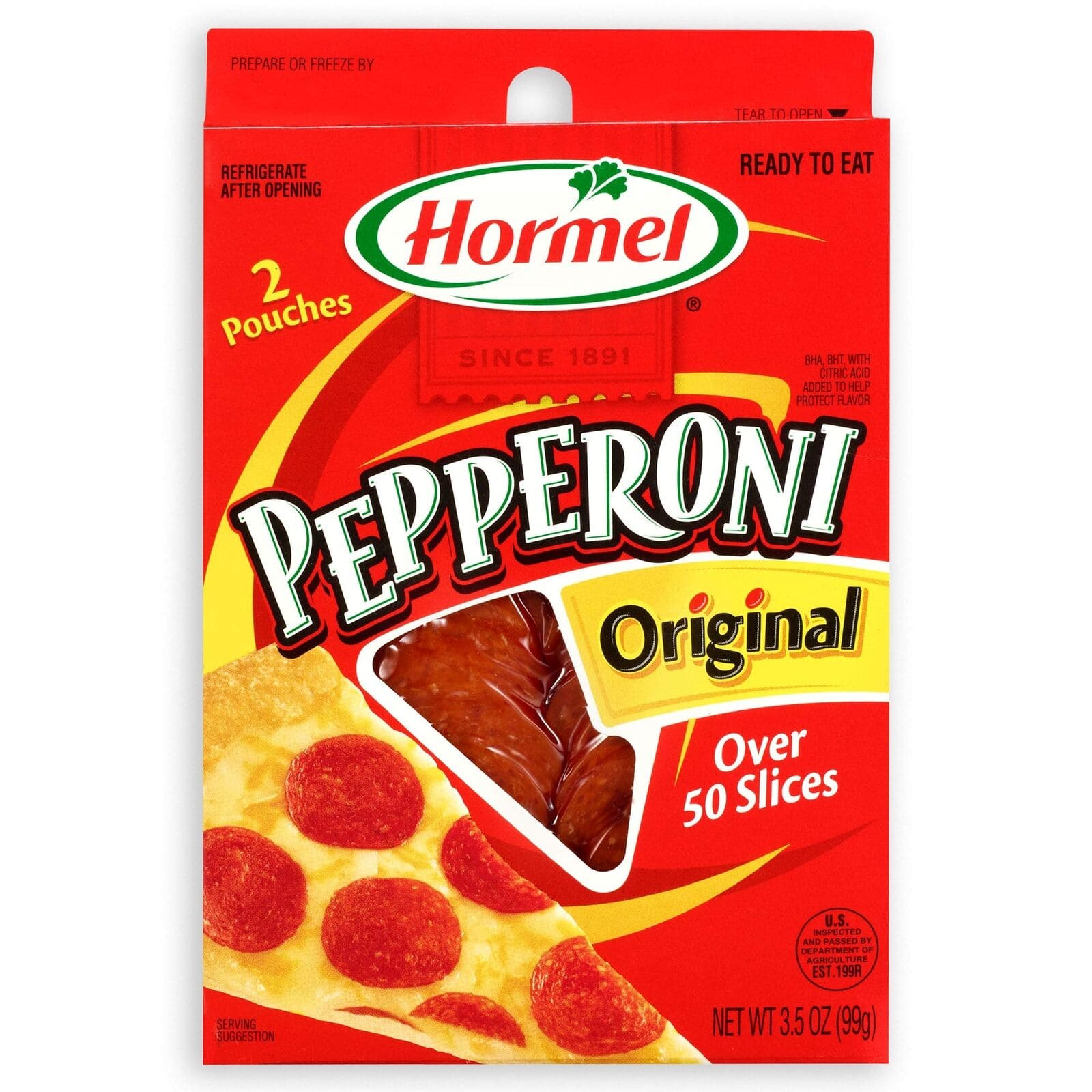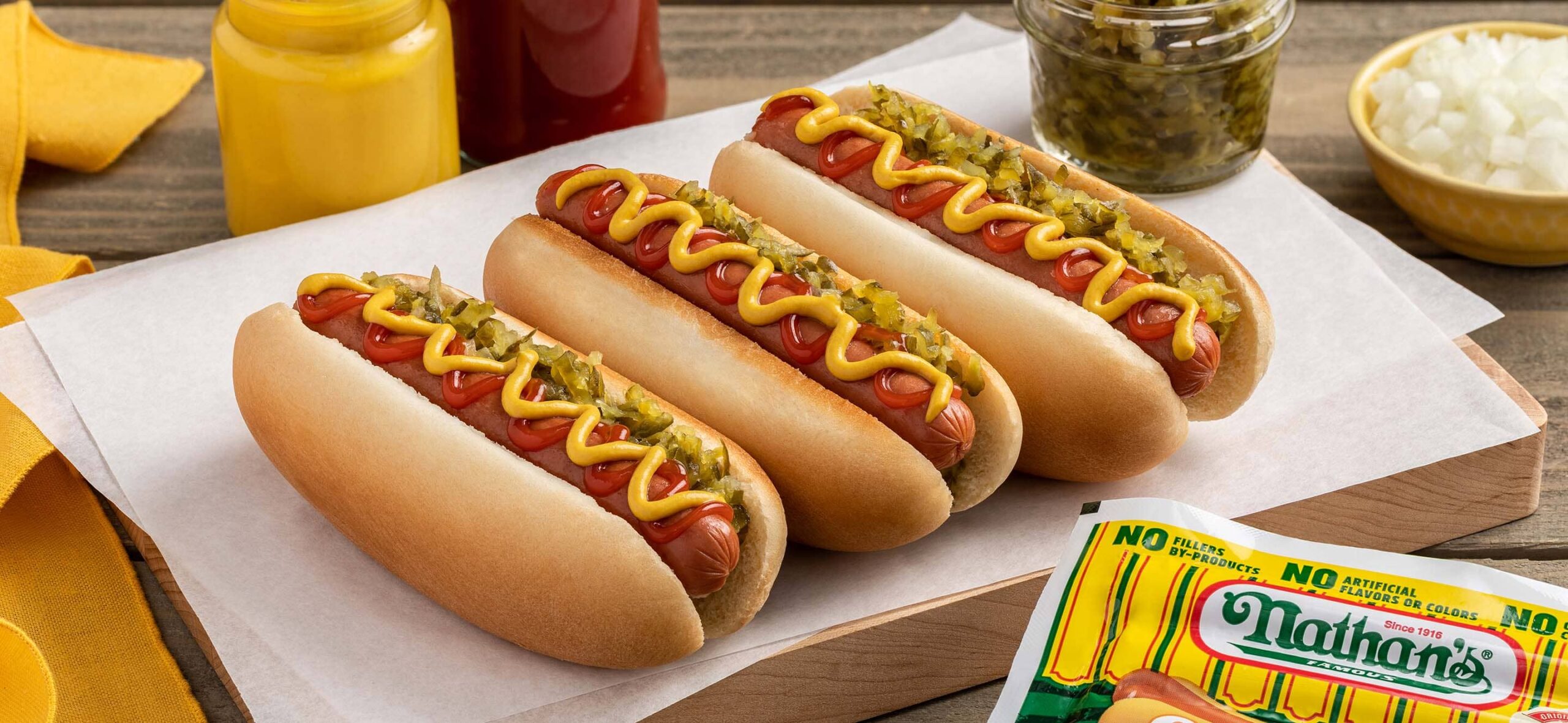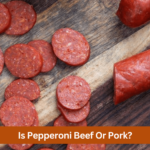When it comes to food, we all have our favorites. For many, pepperoni is a must-have topping on their pizza or sandwich. But for those with gluten intolerance or celiac disease, the question of is pepperoni gluten free can be a source of anxiety and confusion. As someone who has dealt with gluten sensitivity myself, I understand the frustration of having to scrutinize every ingredient before taking a bite. In this article, we’ll explore the truth about question: is pepperoni gluten free, so you can make informed decisions about what you eat without sacrificing your favorite foods.
What Is Pepperoni?
Pepperoni is a type of sausage that is commonly used as a pizza topping or as a snack. It is usually made from beef and pork, but can also be made from other meats such as turkey.
Definition of pepperoni
According to Wikipedia, the term “pepperoni” is derived from the Italian word “peperoni”, which is the plural of “peperone,” meaning “bell pepper.” The word “peperoncino” in Italian refers to spicy chili peppers. Interestingly, the first recorded use of “pepperoni” to refer to a sausage was in 1919. Since then, pepperoni has become a popular pizza topping and snack food around the world.
Common ingredients of pepperoni
In addition to pork and beef, pepperoni can contain a variety of other ingredients, including:
- Salt
- Sugar
- Water
- Sodium nitrite
- BHA and BHT (preservatives)
- Flavorings
Different brands of pepperoni may use slightly different ingredients, so it is important to read the label if you have any concerns about specific ingredients.
What’s pepperoni made of
Pepperoni is made by mixing ground beef and pork with the other ingredients and stuffing the mixture into a casing. The sausage is then smoked and dried to give it its characteristic flavor and texture.
Importance of knowing the ingredients of foods you consume
It is important to know the ingredients of the foods you consume, especially if you have any allergies or dietary restrictions. Some brands of pepperoni may contain gluten or other allergens, so it is important to read the labels carefully before purchasing. In addition, being aware of the ingredients can help you make informed choices about your diet and overall health.

What Is Gluten?
According to the Celiac Disease Foundation, gluten is a protein that is found in wheat, barley, and rye. It can also be found in other grains that have been cross-contaminated with gluten, such as oats. Gluten is composed of two main proteins: gliadin and glutenin. These proteins give dough its elasticity and help baked goods to maintain their shape.
Is Pepperoni Gluten Free?
So, many people wonder is pepperoni gluten free. Pepperoni is often assumed to be gluten-free, but in reality, it can contain gluten depending on the brand and ingredients used.
Why Is Gluten in Pepperoni?
Here are a few potential reasons why gluten can be found in pepperoni:
- Fillers and additives: Some pepperoni brands may use fillers and additives that contain gluten, such as breadcrumbs or wheat flour. These ingredients can be added to extend the volume of the meat and create a more uniform texture.
- Cross-contamination during production: If the same equipment is used to process gluten-containing and gluten-free products, there is a risk of gluten transferring from one product to another. This can occur if the equipment is not properly cleaned between processing runs.
- Ingredient sourcing: Some pepperoni manufacturers may source their ingredients from suppliers that also process gluten-containing ingredients, which increases the risk of cross-contamination.
- Traditional recipes: Some traditional pepperoni recipes may include gluten-containing ingredients, such as breadcrumbs or wheat flour, which are added for flavor or texture.
What Brand Of Pepperoni Is Gluten Free
What pepperoni is gluten free? There are several brands of pepperoni that are considered gluten-free and safe for individuals with celiac disease or a gluten sensitivity to consume.
Is Hormel pepperoni gluten free?
Yes, Hormel Pepperoni is considered gluten-free. According to Hormel’s website, their pepperoni products do not contain any gluten ingredients, and are tested to ensure they meet the FDA‘s gluten-free standard of less than 20 parts per million of gluten.
It is important to note that while Hormel pepperoni is considered gluten-free, it is still important to carefully read the label and ingredient list to ensure that there are no potential sources of gluten. Manufacturers can change their ingredients or production processes at any time, so it is always a good idea to double-check before consuming any new product.

Is Margherita pepperoni gluten free?
According to Margherita’s website, their Uncured Pepperoni Sliced product is considered gluten-free. This means that it does not contain any ingredients that contain gluten, and it is safe for individuals with celiac disease or a gluten sensitivity to consume.
Is Boar’s Head pepperoni gluten-free?
According to Boar’s Head website, their pepperoni products are gluten-free, and are made without any gluten-containing ingredients. However, it is important to read the label and ingredient list to confirm that there are no potential sources of gluten.

Other brands are gluten-free
Here are many brands considered gluten-free you should know:
- Applegate Naturals
- Bridgford Natural
- Gallo Salame
- Hormel Natural Choice
- Olli Salumeria
- Piller’s
- Tillamook Country Smoker
- Vermont Smoke and Cure
Read more: A Guide To Old World Pepperoni: History, Taste, And Uses
Type Of Deli Meats Are Gluten-Free
Types of deli meats that are considered gluten-free include:
- Roast beef
- Turkey breast
- Ham
- Chicken breast
- Corned beef
- Salami (check for gluten-containing fillers or additives)
- Prosciutto (check for gluten-containing flavorings or coatings
What Foods Are Gluten-Free?
Here are some common foods that are known to be naturally gluten-free:
- Fresh fruits and vegetables
- Fresh meats and fish
- Rice
- Quinoa
- Buckwheat
- Polenta
- Corn tortillas
- Gluten-free flours (such as almond, coconut, or rice flour)
- Nuts and seeds
- Dairy products (milk, cheese, yogurt, etc.)
Does a hamburger have gluten?
A hamburger itself does not contain gluten, as it is made from ground beef. However, the bun typically used to make a hamburger does contain gluten. To make a gluten-free hamburger, a gluten-free bun or lettuce wrap can be used instead.
Does bacon contain any gluten?
Bacon itself does not contain gluten, as it is made from pork belly. However, some brands of bacon may contain gluten-containing flavorings or fillers. It’s important to read the label and ingredient list carefully to confirm that the bacon is gluten-free.
Are pickles gluten-free?
Pickles are typically gluten-free, as they are made from cucumbers and vinegar. However, some pickles may contain gluten-containing flavorings or additives, so it’s important to read the label and ingredient list carefully.
Is turkey pepperoni gluten free?
Turkey pepperoni can be gluten-free, but it’s important to check the label and ingredient list to ensure that it doesn’t contain any gluten-containing fillers or additives.
Does shrimp have gluten?
Shrimp is naturally gluten-free as it is a seafood product. However, if it has been breaded or served with a sauce, there may be potential sources of gluten, so it’s important to check the ingredients.
Does egg have gluten?
Eggs do not contain gluten as they are a natural, whole food. However, some egg-containing products, such as quiches or frittatas, may contain gluten as a binder or crust ingredient.
Is Pizza Hut Gluten-Free?
Pizza Hut offers a gluten-free crust option, but note that their gluten-free crust is prepared in a shared kitchen with gluten-containing products, which may result in cross-contamination. Pizza Hut recommends that individuals with celiac disease or a severe gluten allergy do not consume their gluten-free crust.

Is Mcdonald’s Gluten-Free?
McDonald’s offers a limited selection of gluten-free items, including their fries and some of their salads. However, McDonald’s cannot guarantee that their food is 100% gluten-free, as their kitchen and cooking equipment is shared with gluten-containing products.
Does Subway Have Gluten Free In Bread?
Subway offers gluten-free bread at some of their locations. However, not all Subway locations offer gluten-free bread, so it is important to check with your local store before ordering. Additionally, cross-contamination is always a risk, so it is important to ask about preparation methods and potential risks before ordering.
Do Nathan’s Hot Dogs Contain Gluten?
According to the information provided by the company, Nathan’s hot dogs are considered gluten-free to a level of 20 parts per million. They claim that their hot dogs are produced in a gluten-free facility, meaning that the risk of cross-contamination with gluten-containing ingredients is minimized during production.

Are Mccormick Bacon Bits Gluten-Free?
McCormick Bacon Bits are considered gluten-free according to the company’s website. They do not add any gluten ingredients to their bacon bits, and they test to ensure that they meet the FDA’s standard of less than 20 parts per million of gluten.
Can You Eat Pepperoni If You Have Celiac Disease?
Whether or not someone with celiac disease can eat pepperoni depends on the specific product and brand. While some brands of pepperoni are considered gluten-free and safe for individuals with celiac disease to consume, others may contain gluten ingredients or be at risk for cross-contamination during production.
Explanation of celiac disease and how it relates to gluten
Celiac disease is an autoimmune disorder that affects the digestive system. When individuals with celiac disease consume gluten, a protein found in wheat, barley, and rye, their immune system attacks the lining of the small intestine.
Over time, this can lead to damage and inflammation of the intestine, which can cause a variety of symptoms, including digestive issues, fatigue, and nutrient deficiencies.
Risks of consuming gluten for those with celiac disease
For individuals with celiac disease, consuming gluten can lead to damage to the small intestine, which can cause a range of symptoms and long-term health problems. Some of the risks of consuming gluten for those with celiac disease include:
- Abdominal pain and bloating
- Diarrhea and/or constipation
- Fatigue
- Nutrient deficiencies
- Increased risk of certain types of cancer
- Osteoporosis
- Infertility and pregnancy complications
Recommended dietary restrictions
The only treatment for celiac disease is a strict gluten-free diet. This means avoiding all foods and products that contain wheat, barley, or rye, as well as any products that may have come into contact with gluten during production or preparation. Some examples of foods to avoid on a gluten-free diet include:
- Bread, pasta, and other wheat-based products
- Beer and other malt beverages
- Baked goods, such as cookies, cakes, and pastries
- Some sauces and condiments, such as soy sauce and malt vinegar
- Processed meats and deli meats that may contain gluten-containing fillers or additives
Instead, those with celiac disease should focus on eating naturally gluten-free foods, such as fruits, vegetables, meats, fish, eggs, and dairy products.
Can a celiac eat gluten free pepperoni pizza?
Yes, individuals with celiac disease can eat gluten-free pepperoni pizza. However, it is important to make sure that all of the ingredients used to make the pizza are gluten-free. This includes the crust, sauce, cheese, and pepperoni. It’s important to read the labels carefully and verify that there are no gluten-containing ingredients or potential sources of cross-contamination.
Many grocery stores and restaurants now offer gluten-free pizza options, but it’s always important to check with the staff to ensure that they follow appropriate preparation practices to minimize the risk of cross-contamination. By taking these steps, individuals with celiac disease can safely enjoy a delicious gluten-free pepperoni pizza.
Is Pepperoni Safe for Gluten Sensitivity?
Can people with gluten-free eat pepperoni? Individuals with gluten sensitivity may experience symptoms when they consume gluten, but the symptoms are not as severe or long-lasting as those experienced by individuals with celiac disease.
While pepperoni itself does not contain gluten, it is possible for gluten to be added to pepperoni as a filler or additive. Therefore, it’s important to carefully read the label and ingredient list of any pepperoni product to ensure that it’s gluten-free and safe to consume.
Symptoms of gluten sensitivity
Symptoms of gluten sensitivity can vary widely, but may include:
- Abdominal pain
- Bloating
- Diarrhea
- Constipation
- Headaches
- Fatigue
- Joint pain
- Skin rash
The difference between gluten sensitivity and celiac disease
| Gluten Sensitivity | Celiac Disease | |
| Definition | An immune response to gluten that causes symptoms, but no long-term damage to the small intestine. | An autoimmune disorder in which the body’s immune system reacts to gluten, causing damage to the small intestine. |
| Symptoms | Abdominal pain, bloating, diarrhea, fatigue, joint pain, skin rash. | Abdominal pain, bloating, diarrhea, constipation, weight loss, fatigue, nutrient deficiencies, increased risk of certain types of cancer, osteoporosis, infertility and pregnancy complications. |
| Diagnosis | Diagnosis is based on symptoms, elimination of gluten from the diet, and improvement of symptoms. | Diagnosis is based on a combination of blood tests, biopsy of the small intestine, and response to a gluten-free diet. |
| Treatment | Treatment involves a gluten-free diet to manage symptoms. | Treatment involves a strict gluten-free diet for life to prevent long-term health complications. |
How to determine if you have gluten sensitivity
If you suspect that you may have gluten sensitivity, there are a few steps you can take to help determine whether or not gluten is the cause of your symptoms:
- Keep a food journal: Record everything you eat and drink, along with any symptoms you experience. This can help you identify patterns and determine which foods may be triggering your symptoms.
- Try an elimination diet: Remove gluten-containing foods from your diet for a period of time (usually at least two weeks), and then reintroduce them to see if your symptoms return. If your symptoms improve during the elimination phase and return during the reintroduction phase, this may be an indication of gluten sensitivity.
- Get tested: While there is no definitive test for gluten sensitivity, your healthcare provider may be able to perform tests to rule out other conditions that may be causing your symptoms. Additionally, some genetic tests can help identify if you have a higher risk for developing celiac disease.
How to Avoid Gluten When Eating Pepperoni
Here are some tips to help you avoid gluten when eating pepperoni:
- Read the label: Carefully read the label and ingredient list of any pepperoni product you are considering purchasing to ensure that it’s gluten-free.
- Look for certified gluten-free products: Look for products that are certified gluten-free by a trusted organization, as this can provide extra assurance that the product is safe to consume.
- Choose natural or organic products: Choose natural or organic pepperoni products that are less likely to contain fillers or additives that may contain gluten.
- Make your own: Consider making your own pepperoni using high-quality ingredients that you know are gluten-free.
- Check for cross-contamination: If you’re purchasing pre-sliced pepperoni from a deli, be sure to ask if they use separate equipment and utensils to avoid cross-contamination with gluten-containing products.
By following these tips, you can enjoy delicious pepperoni without the risk of gluten exposure.
How to Cook with Gluten Free Pepperoni
Cooking with gluten-free pepperoni can be just as delicious and satisfying as cooking with traditional pepperoni. Here are some tips for cooking with gluten free pepperoni:
Tips for cooking with gluten free pepperoni
- Choose high-quality products: Look for gluten-free pepperoni products that are made with high-quality ingredients and have a good flavor and texture.
- Experiment with different recipes: Try using gluten-free pepperoni in your favorite recipes, or experiment with new recipes that incorporate pepperoni.
- Use it as a topping: Top your gluten-free pizzas, salads, or sandwiches with slices of gluten-free pepperoni for a delicious and flavorful addition.
- Add it to pasta dishes: Cut gluten-free pepperoni into small pieces and add it to pasta dishes for a tasty and easy addition.
Recipe ideas using gluten free pepperoni
Here are some recipe ideas that use gluten free pepperoni:
- Gluten-Free Pepperoni Pizza: Top your favorite gluten-free pizza crust with tomato sauce, shredded cheese, and slices of gluten-free pepperoni for a classic and delicious pizza.
- Pepperoni Pasta Salad: Cook your favorite gluten-free pasta, then toss it with chopped veggies, olives, and diced gluten-free pepperoni. Dress the salad with your favorite vinaigrette and enjoy.
- Pepperoni and Cheese Stuffed Mushrooms: Clean and remove the stems of large mushrooms, then stuff each one with a mixture of diced gluten-free pepperoni and shredded cheese. Bake in the oven until the cheese is melted and bubbly.
FAQs
Can you have gluten sensitivity and not have celiac disease?
Yes, it is possible to have gluten sensitivity without having celiac disease. Gluten sensitivity is a condition in which an individual experiences symptoms after consuming gluten, but does not have the same immune response as those with celiac disease.
Is it safe to assume that all processed meats are gluten-free?
No, it is not safe to assume that all processed meats are gluten-free. Some processed meats may contain gluten as a filler or additive, so it’s important to carefully read the label and ingredient list before consuming.
How can I find out if a restaurant has gluten-free options?
Many restaurants now offer gluten-free options or have separate gluten-free menus. You can also call ahead or check the restaurant’s website to see if they offer gluten-free options.
Are there any risks associated with consuming gluten-free pepperoni?
While gluten-free pepperoni is generally considered safe for those with celiac disease or gluten sensitivity, there is always a risk of cross-contamination during production or processing. It’s important to read labels carefully and verify that the product is truly gluten-free before consuming.
Are pepperoni and salami the same?
No, pepperoni and salami are not the same. While they are both types of cured meats, they have different flavor profiles and may contain different ingredients.
Are all pepperonis gluten free?
No, not all pepperonis are gluten-free. Some brands may use fillers or additives that contain gluten, so it’s important to read the label and ingredient list to verify that the product is gluten-free.
What is the white layer found on pepperoni?
The white layer found on some types of pepperoni is a combination of lactic acid bacteria and mold that is used during the curing process to give the pepperoni its distinct flavor.
Does mozzarella cheese have gluten?
Mozzarella cheese is generally considered gluten-free, as it is made from milk and does not typically contain gluten-containing ingredients.
Does ketchup have gluten?
Some ketchups may contain gluten as a thickener or filler, so it’s important to read the label and ingredient list to verify that the product is gluten-free. However, many brands do offer gluten-free ketchup options.
Does Coca Cola have gluten in it?
No, Coca-Cola does not contain gluten. The ingredients of Coca-Cola are carbonated water, high fructose corn syrup or sucrose, caramel color, phosphoric acid, natural flavors, and caffeine. None of these ingredients contain gluten or are derived from gluten-containing grains such as wheat, barley, or rye.
Conclusion
In conclusion, the question is pepperoni gluten-free is an important one to consider for anyone with gluten intolerance, sensitivity, or celiac disease. As someone who has a gluten intolerance, I understand the importance of carefully selecting the foods that I eat. While pepperoni is often assumed to be gluten-free, it is essential to read labels, ask questions, and research brands to ensure that it is safe for consumption. The good news is that there are plenty of gluten-free pepperoni options available in stores and online, as well as helpful tips for cooking and eating out safely. By prioritizing our health and dietary needs, we can enjoy delicious pepperoni without compromising our well-being.





